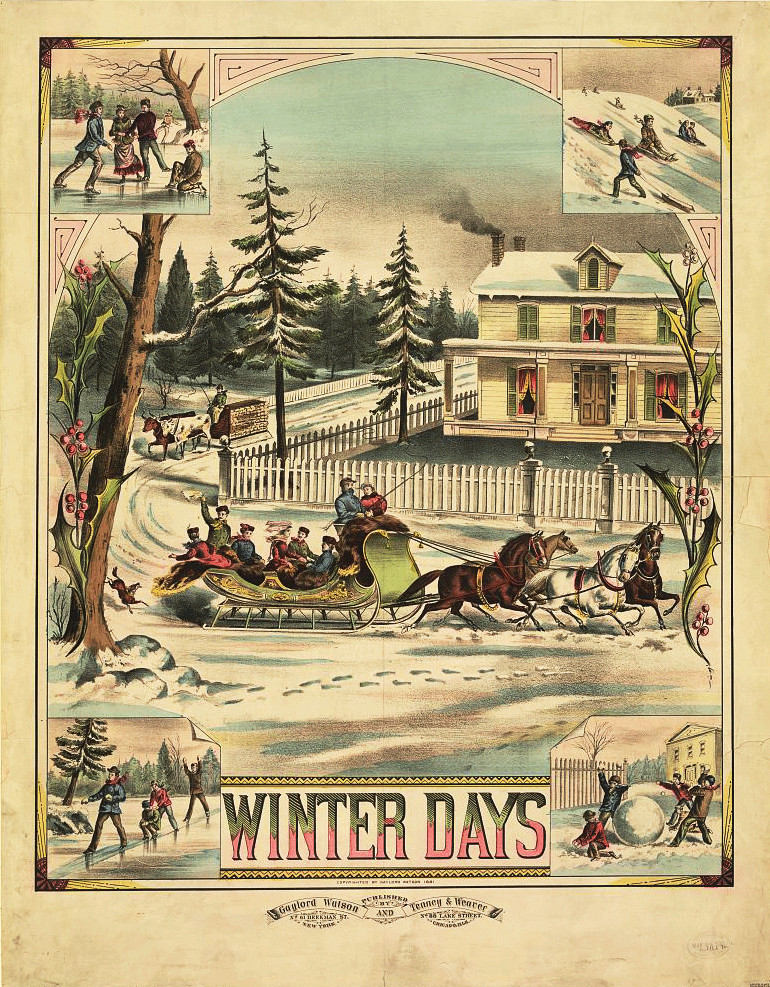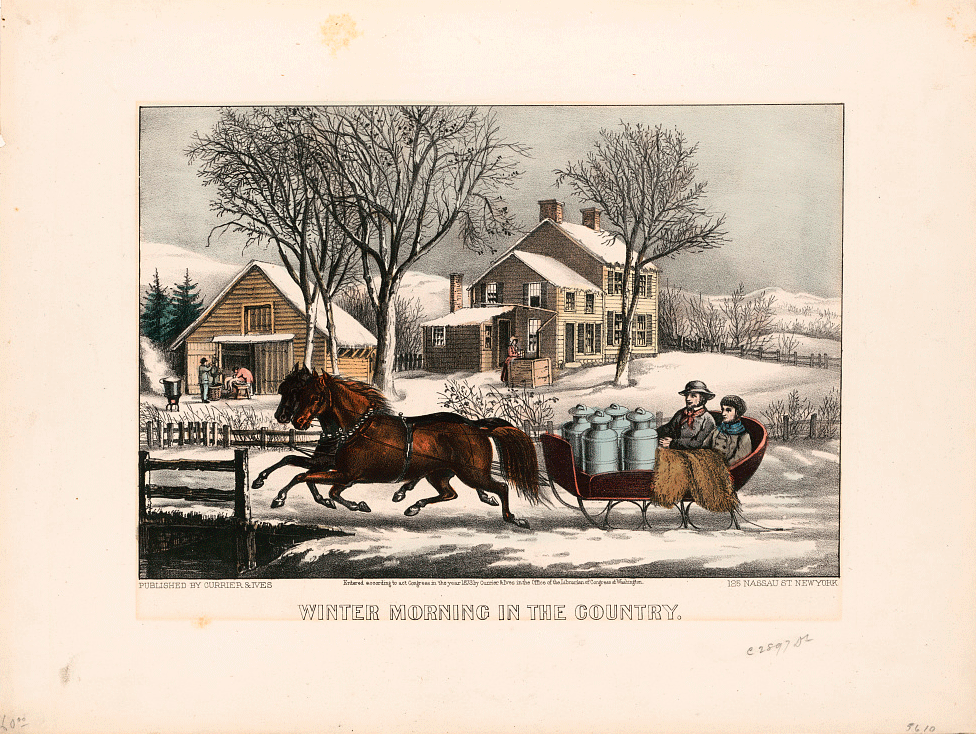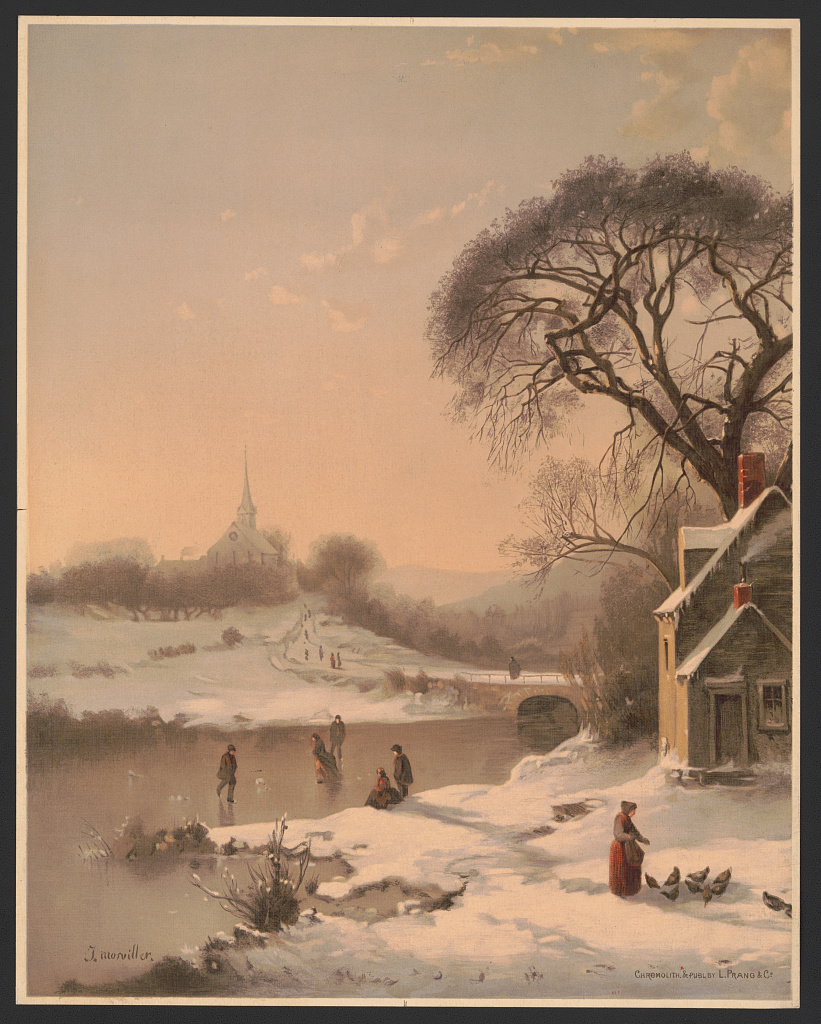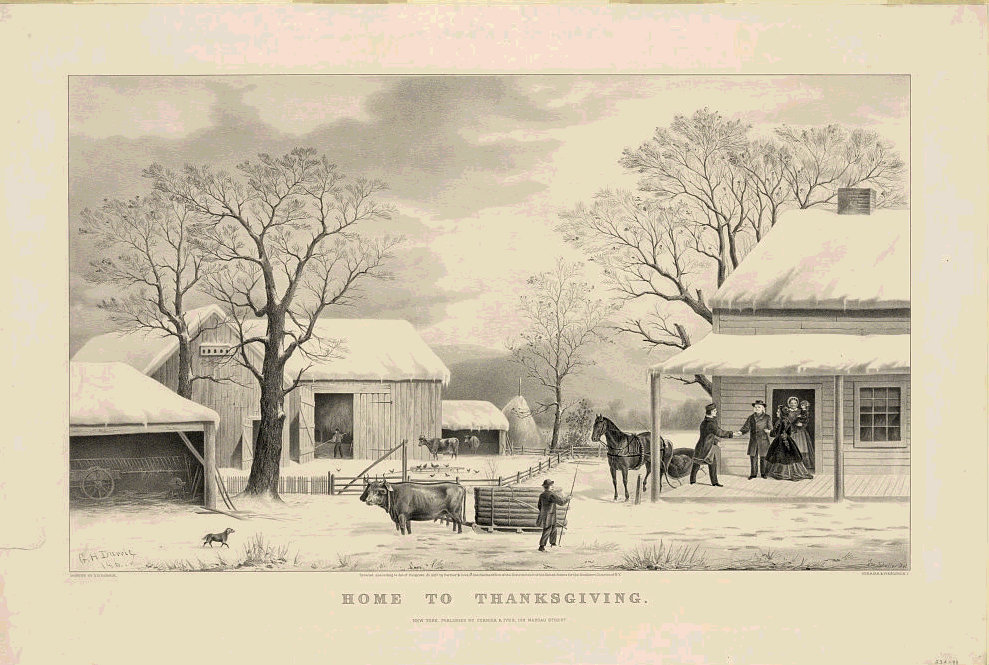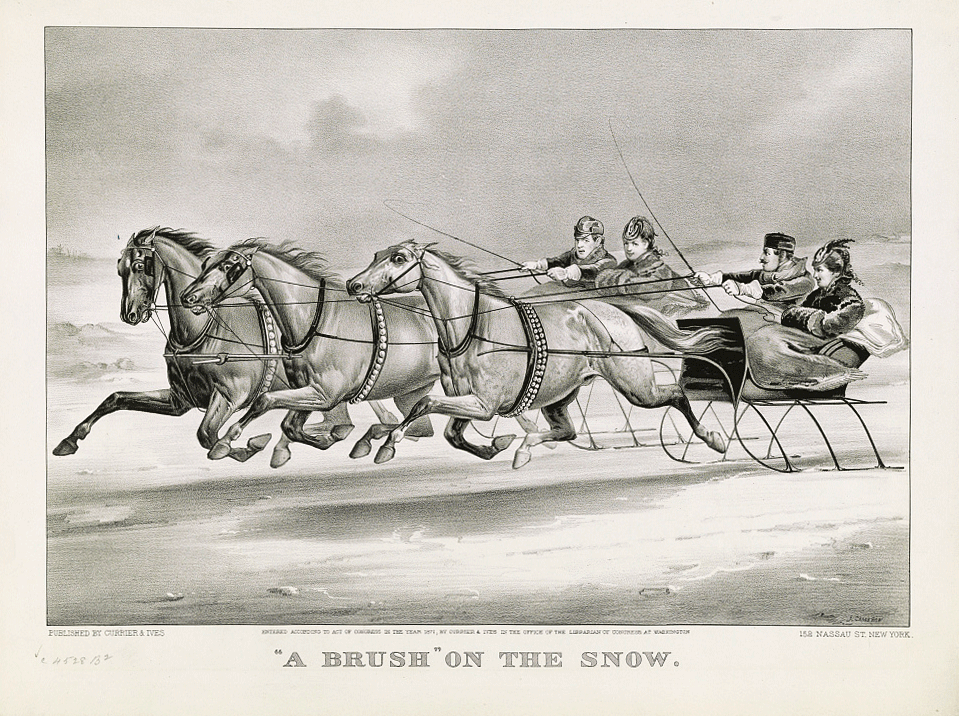
1867 American Winter Scene
Niagara Falls, 1883
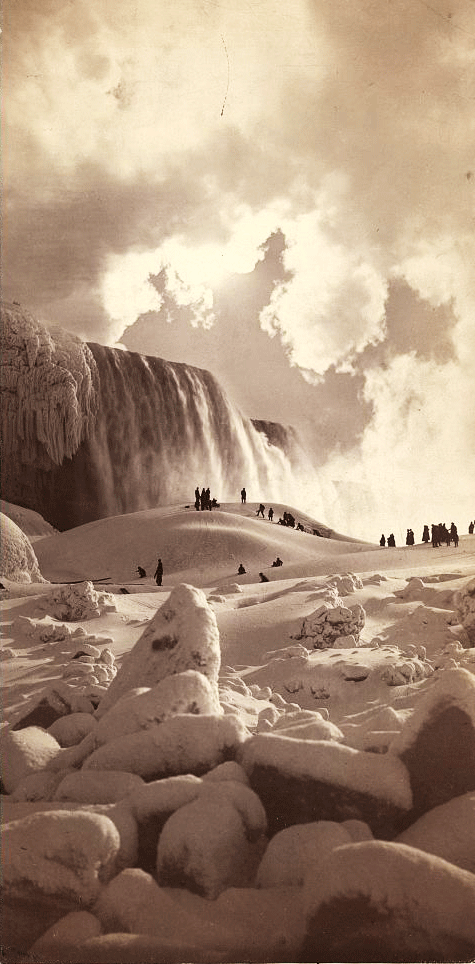
Winter Days, 1881
Winter Morning 1873
American Homestead Winter, 1868
1860 Ice Skates for Sale
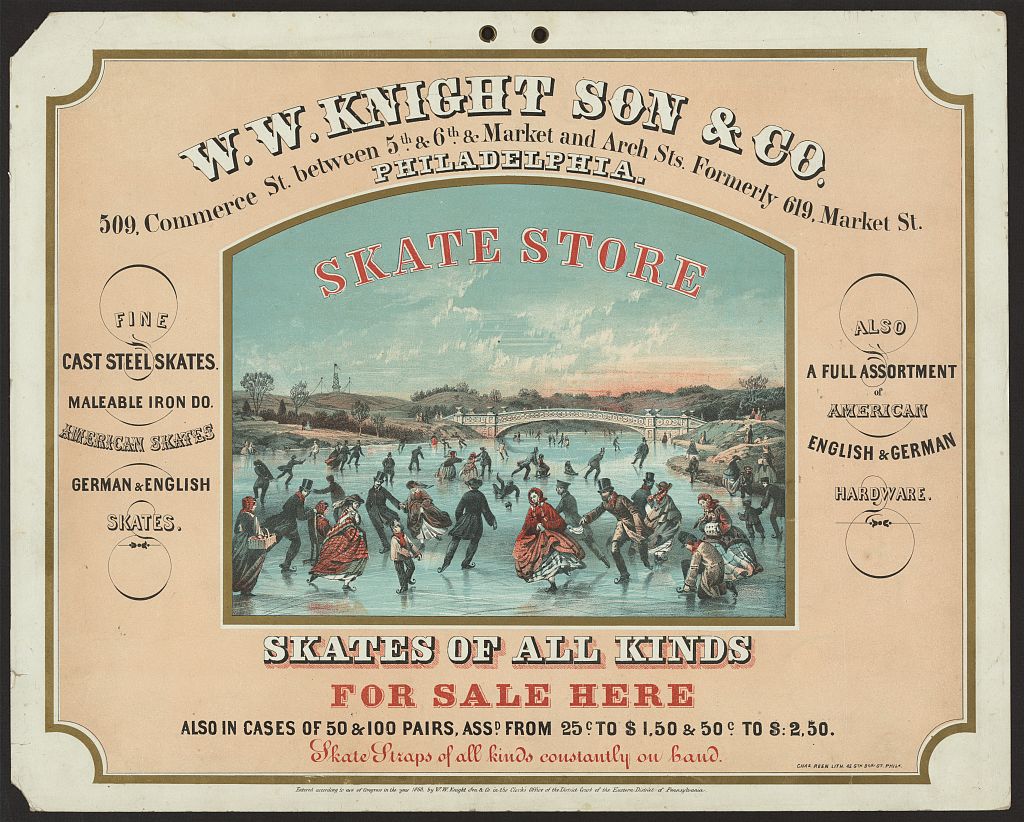
Hello Halfway Brook Friends!
I hope this finds everyone well.
I plan on posting old or nostalgic winter photos/images I found on the Library of Congress for my new Halfway Brook series. I hope you will enjoy them.
Kind Regards,
Louise Smith
1869 Winter
Winter by J. Morviller. Chromo-Lithographed and Published by L. Prang & Co., Boston, 1869. Library of Congress: 2017650231.
Home to Thanksgiving
1890 Summer Homes and Rambles Along the Erie Railway
(Click twice on the above map to see Eldred between the long white spot and two smaller ones, above the red Erie RR line.)
This Map exhibits in detail the topography of the country in which the many superior Summer Resting Places of the Erie are located.
Its attractions are as diversified as they are picturesque and beautiful.
Mountain and Lake and Stream—rapid, cascade and cataract, with rolling farmland and primeval forest, combine to render this region especially and peculiarly a sanctuary during the hot summer months to those who seek
REST, HEALTH, or RECREATION in the midst of rural beauty.
That thousands of city people year after year spend their summer somewhere within its borders gives ample testimony to its
WONDERFUL HEALTHFULNESS.
ITS SCENIC BEAUTIES ARE UNRIVALED.
AS A SANITARIUM IT IS PEERLESS.
Compiled and published by the Passenger Department of the
NEW YORK, LAKE ERIE, & WESTERN RAILROAD


